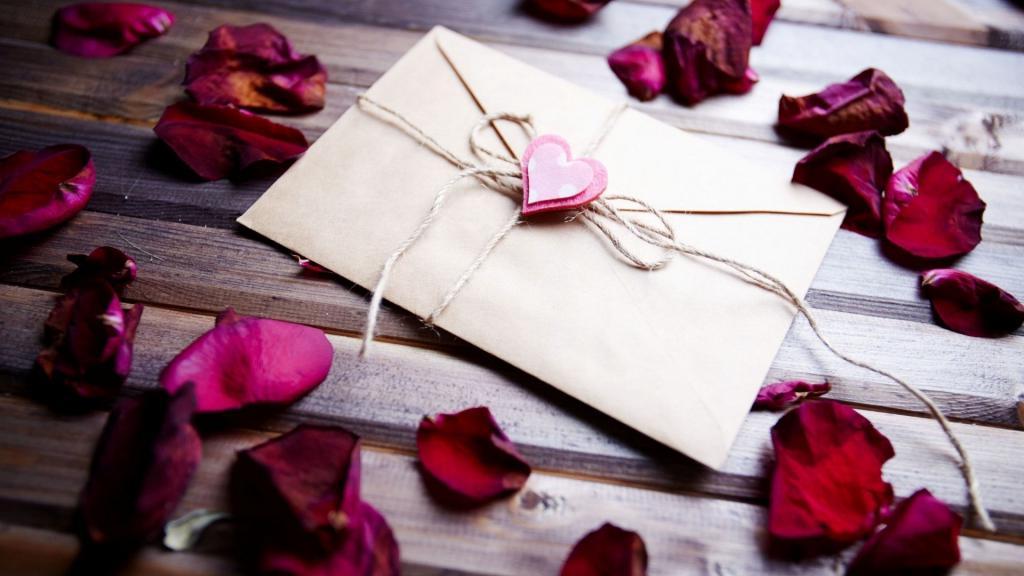Step into a world shrouded in mystery, where love intertwines with ancient legends and traditions. Valentine’s Day, a day cherished by millions around the globe, holds a secret origin that beckons us to explore its enigmatic past. In this captivating article, we embark on a journey to unravel the mysterious origin of Valentine’s Day, unearthing stories and unmasking the hidden truths behind this beloved holiday. Brace yourself for a voyage through time, where the threads of love, sacrifice, and romance are woven into a tapestry that has captivated hearts for centuries.
Contents
Valentine’s Day – A Global Celebration of Love
The origin of Valentine’s Day can be traced back to ancient Rome and the Christian martyr St. Valentine, its captivating stories have spread far and wide, reaching all corners of the globe. The celebration of love on this day is not limited to a single culture or region but resonates with people from diverse backgrounds. It is a reminder that love is a cherished emotion that knows no boundaries.
Valentine’s Day is adorned with symbols that hold deep cultural significance across different societies. The heart, universally recognized as a symbol of love, represents the core essence of this celebration. Its simplicity and elegance capture the essence of affection and emotional connection. Roses, with their vibrant colors and delicate petals, symbolize beauty, passion, and romance. They have been cherished for the history of Valentine’s Day as a token of deep affection.
The enduring popularity of these symbols associated with Valentine’s Day can be attributed to their timeless appeal and the emotions they evoke. Regardless of cultural background, people recognize and appreciate these symbols as representations of love, making them a universal language of affection. They have become ingrained in our collective consciousness and continue to be embraced year after year, transcending cultural barriers.
Origin of Valentine’s Day and Its Evolution Through Time
Dive with us into a dusty treasure chest of history, where we’ll unearth the tangled origin of Valentine’s Day. Was it a martyred saint, a mischievous god, or a clever marketing ploy? We’ll sift through legends, myths, and historical clues to unlock the secrets of Cupid’s mystery box, revealing the fascinating journey of a day dedicated to celebrating the most powerful force in the universe: love.
>>> Read more: The Fascinating Origin Of Christmas
Reveal the Enigmatic Origins of Valentine’s Day

Valentine’s Day has enigmatic origins that can be traced back to a fascinating blend of ancient Roman festivals, Christian martyrs, and medieval traditions. To unravel the origin of Valentine’s Day, we must explore the pagan festivals of Lupercalia and Februa, which held rituals and traditions associated with fertility and purification.
Lupercalia, celebrated in ancient Rome from February 13th to 15th, was a raucous festival dedicated to Lupercus, the Roman god of fertility. During this festival, young men called Luperci would run through the streets, clad in goatskin loincloths, and playfully strike women with strips of goat hide known as “februa.” This act was believed to enhance fertility and ensure the well-being of the Roman Empire.
Februa, another pagan festival held in mid-February, was a period of purification. It involved rituals where people cleansed themselves and their surroundings to welcome the coming spring. The name “Februa” itself is believed to be the etymological origin of Valentine’s Day of the word “February.”
Christianity emerged in the Roman Empire, and as it gained influence, it sought to transform existing pagan celebrations into Christian holidays. In the 5th century, the Christian Church repurposed Lupercalia and associated it with a Christian martyr named Valentine. The exact identity of Saint Valentine is uncertain, as there were multiple martyrs with the same name.
However, one popular legend related to Valentine’s Day origin suggests that Valentine was a Roman priest who secretly performed marriages for soldiers, defying Emperor Claudius II’s decree against marriage for young men. Valentine was eventually imprisoned and executed on February 14th, thus connecting his martyrdom with the date of the Lupercalia festival.
Valentine’s Day, as we know it today, began to take shape in the medieval period. Geoffrey Chaucer, the renowned English poet from the 14th century, played a significant role in popularizing the celebration of Valentine’s Day as a day of romantic love. In his poem “Parliament of Fowls,” Chaucer linked the notion of courtly love with the feast of St. Valentine, further associating the day with expressions of romantic affection.
Evolution of Valentine’s Day in Modern Times

Valentine’s Day has undergone a remarkable evolution from the origin of Valentine’s Day as a religious observance to a secular holiday celebrated worldwide. Over time, the holiday has experienced changes in traditions, expressions of love, and commercialization.
In the 18th century, exchanging handwritten love notes and small tokens of affection became popular among the upper classes in Europe. This tradition gradually spread, and by the 19th century, printed cards known as “valentines” became widely available. These valentines featured sentimental verses and elaborate designs, often adorned with lace, ribbons, and colorful illustrations.
As the industrial revolution advanced, the mass production of valentines became possible, leading to increased accessibility and popularity of the holiday. The Victorians, known for their penchant for elaborate displays of sentiment, embraced Valentine’s Day wholeheartedly, further fueling its commercialization.
In modern times, Valentine’s Day has become a highly commercialized holiday, with the exchange of gifts such as chocolates, flowers, and jewelry being common practices. The retail industry capitalizes on the occasion, offering an array of Valentine’s Day-themed merchandise and experiences.
However, alongside the commercialization, there has been a shift towards more selective personalized gifts and meaningful expressions of love. Many individuals now emphasize the importance of spending quality time together, engaging in acts of kindness, and expressing genuine emotions rather than solely relying on material gifts.
Valentine’s Day has also evolved into a celebration beyond romantic love. It has become a day to express love and appreciation for family members, friends, and even oneself. This inclusive approach has broadened the holiday’s appeal and made it a heartfelt celebration for a wider range of relationships.
>>> Read more: Valentine Day Colors Holding Connection to The Word of Love
Typical Gifts & Greetings in History of Valentine’s Day
Throughout the origin of Valentine’s Day, various gifts and greetings have been exchanged to express love and affection. These traditions have evolved over time, but many of them continue to hold significance in modern celebrations. Let’s explore some of the typical gifts and greetings associated with Valentine’s Day throughout history.

- Historical Love Letters and Poems:
Love letters and poems have long been cherished as heartfelt expressions of affection. In the origin of Valentine’s Day, individuals would pour their emotions onto paper, penning romantic verses and declarations of love. These handwritten messages held a deep personal touch, allowing lovers to intimately convey their feelings and desires.
Famous literary figures, such as William Shakespeare and Lord Byron, contributed to the tradition of poetic expressions of love. Even today, the tradition of exchanging heartfelt written sentiments remains a popular way to convey love on Valentine’s Day.
- Flowers and Their Symbolism:
Flowers have held symbolic meaning in the language of love for centuries. Different blooms convey different emotions and sentiments. For example, red roses have become synonymous with passionate love, while pink roses often represent admiration and gratitude. In Victorian times, a period known for its emphasis on symbolism, the exchange of flowers carried a coded message. This tradition has endured, and flowers remain one of the most beloved and classic gifts on Valentine’s Day.
- Handmade Tokens of Affection:
Handmade gifts have a special charm and personal touch that cannot be replicated by store-bought items. Throughout the origin of Valentine, individuals have dedicated their time and creativity to crafting unique tokens of affection for their loved ones.
Handwritten love notes, handmade jewelry, knitted scarves, or even personalized artwork were often exchanged as heartfelt expressions of love. These handmade gifts were valued not only for their inherent beauty but also for the love and effort invested in creating them.
- Chocolates and Sweet Treats:
The tradition of gifting chocolates and sweet treats has its origin of Valentine’s Day in the 19th century. Richard Cadbury, a British chocolatier, popularized the idea of heart-shaped boxes filled with chocolates as Valentine’s Day gifts. The sweet indulgence of chocolates became synonymous with the celebration of love. Today, boxes of assorted chocolates, chocolate-covered strawberries, and other delectable treats continue to be a delightful and popular gift choice.

- Romantic Surprises and Experiences:
In addition to tangible gifts, the element of surprise and creating cherished memories has always been an important aspect of Valentine’s Day. Throughout history, individuals have planned romantic surprises and experiences to express their love.
These surprises could include candlelit dinners, picnics in scenic locations, surprise getaways, or even thoughtful gestures such as breakfast in bed or a heartfelt serenade. The intention behind these gestures is to create lasting memories and show one’s dedication to making Valentine’s Day a special occasion.
Conclusion
As we conclude our voyage into the deep origin of Valentine’s Day, we emerge with a newfound appreciation for the ancient tales that have shaped this cherished holiday. Today, Valentine’s Day stands as a testament to the enduring power of love and the ability to express our deepest affections to those who hold a special place in our hearts. So, as we revel in the romance and exchange tokens of affection, let us remember the mysterious origins that lie beneath the surface, reminding us that love has always been a force that unites us all.



